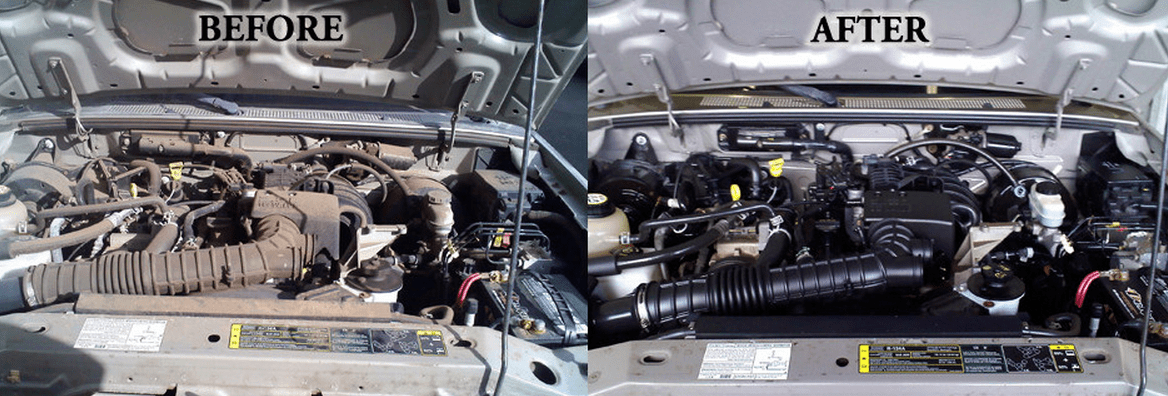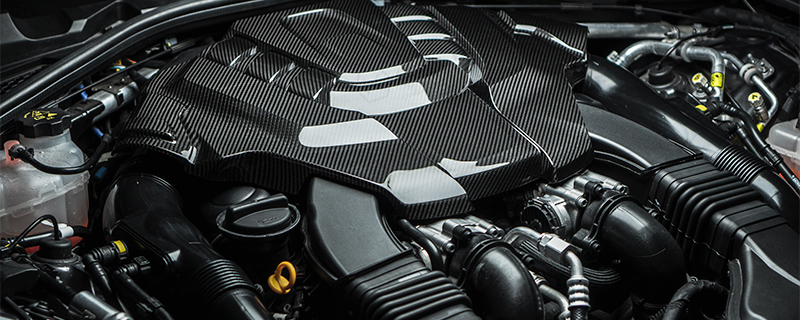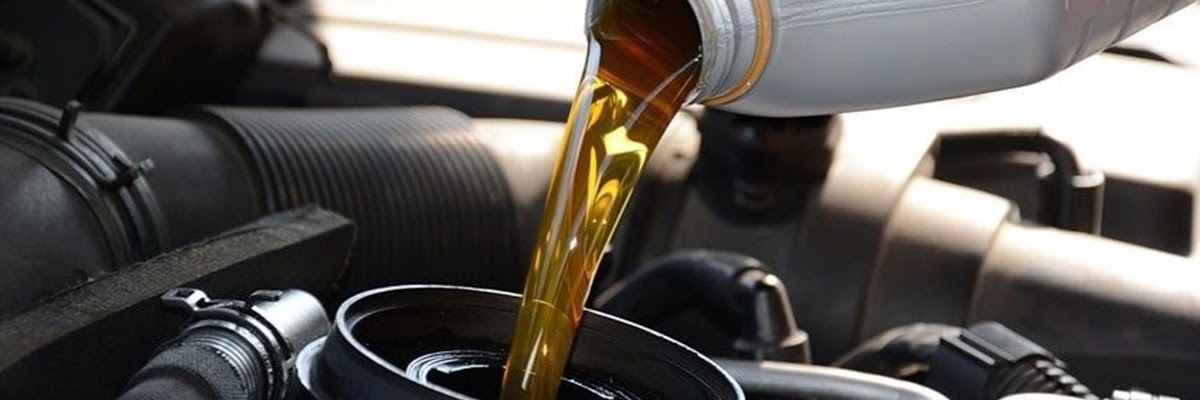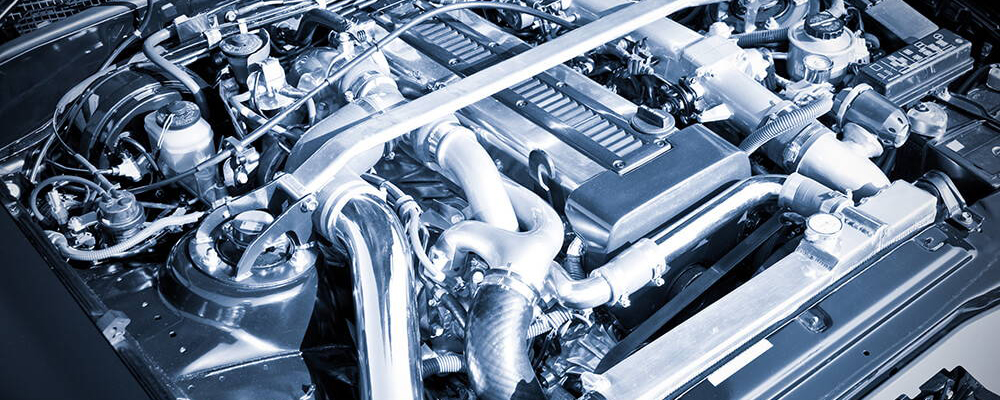
Car washing is the "daily work" of car owners. No matter you do it yourself or go to a repair shop, you do it once a day or once a month, you will definitely wash it regularly. However, engine compartment cleaning is not the option that every car owner takes care of. In this article, let's find out more details about it.
4. Wire harness conditioner (extra credit)
The first task is to remove dirt from the components in the engine compartment. It ensures good engine operation and facilitates inspection of potential problems such as dirt and oil leaks. This job means too much to the engine maintenance. Secondly, it is good to make the engine compartment look neat. It indicates that we take care of our own cars.
I take my car as an example. I drive for two years, and I simply clean the engine compartment every few months. Until now, I haven't used the abstergent.
As a result, some oil sludge has been accumulated near the cylinder head for a long time. And I plan to carry out a thorough cleaning by myself.
Personally, I don't recommend flushing the engine with a high-pressure water gun because it won't do much good. The stuff stuck on many parts in the engine compartment is not just muddy water and floating soil (especially near the cylinder head), but oil sludge that has accumulated over a long period of time, so it can't only be flushed out with water.
In addition, if you are not familiar with the engine structure, blindly flushing back and forth with the high-pressure water gun will cause damage to components of the engine compartment, such as the ignition coil, fuse box and other parts.

Engine cleansing agent is a kind of car care product. It is used to clean the oil sludge, carbon deposits, gum and other harmful substances.
It keeps the internal engine clean, enhances oil flow, reduces wear and tear, and prolongs the engine life. The cleansing agent has two types: foam and mist.
Before using the harness cleanser, you should clean the engine to remove the dust and oil sludge caused by the evaporation of oil from the engine operation.
The width of the brush head should not be too large. The gaps of the engine compartment are plentiful and narrow, so it is more convenient to use the narrow-headed brush.
Note: It is recommended to park the car in a place with a drainage outlet. Although water gun flushing is not applicable, there will also be sewage flowing to the ground after cleaning. It is terrible to pollute the environment.
Now many vehicles are designed with plastic trim cover for the beauty of the engine compartment. Many drivers may wipe this decorative cover clean. They think this is the behavior that takes care of the engine, but it is just a piece of plastic.
However, the oil sludge covered underneath is the point. It is still staying there without being removed. In order to clean thoroughly, we need to remove this plastic cover at first.
Generally speaking, this plastic cover is fixed with a card. You can remove it directly by grabbing the edge of the cover and pulling it upward. It is very easy.
But in some old vehicles (such as Volkswagen POLO), the cover will be connected to other pipelines. The air filter is designed inside this cover inside. You need to remove all the pipelines before pulling it off.

After removing the plastic cover, you can see the main body of the engine. It is obvious that the engine is much dirtier than the plastic cover.
Vehicles that are running for a few years will have oil sludge on the cylinder head cover or near the oil filler. It looks like a gray matte finish, and it takes a lot of work to clean up.
The engine cleansing agent just mentioned comes in handy here. First, use a cloth or brush to simply dust the engine compartment. Next, you can prepare the cleansing agent to do the job.
Here is a reminder that if the vehicle has just been driven, wait for a bit of cooling for about 5 minutes before cleaning with detergent.
Note: Preparation should be done. The cleaning agent has a side effect on the human body. The smell is very irritating. It is best to wear gloves and a mask if possible, which is very important.
The first step is to spray the detergent on the engine compartment and various parts. Focus on the oil sludge, but note that some engine parts should be protected from water or detergent.
Pay attention to the fuse box, ignition coil, generator and ECU. They should not be splashed with water or detergent. It is better to do the waterproof treatment (cover with a plastic sheet).
These parts can be cleaned separately. It is recommended to spray the cleaner on a piece of cloth and then wipe them, which is equally effective.
Apart from the parts that can not get wet mentioned above, the cleaning method of other parts is the same. The principle is to try to wash the places that can be reached by hand.
The second step is to use a small brush to clean the area that has been sprayed with cleaning agent. Then wait about 5 minutes or so.
The first two steps are the ones that take up the most time. They are the most repetitive in actions. After getting them done with a brush, we wait about 2-5 minutes for the cleaner to break down the oil sludge until they are completely disintegrated.
At this point, wash the dirt off with clean water. After the cleaning agent disintegrates the sludge, it still adheres to various parts in the engine compartment. So we have to rinse them off with water before they are about to air dry.
The water cleaning here is not to play hard to flush. This is different from using the high-pressure water gun. It is about to flush down the oil sludge that has been melted. Only using chamois or cloth is not enough. The melted oil sludge will continue to paste on various parts.

As we have mentioned earlier, if you are inexperienced or do not know much about the engine structure, try not to use the high-pressure water gun to flush imprudently.
I suggest that you use small equipment, such as water bottles or small spray cans, which will ensure more precise movements and no splashes of water to hurt the innocent.
However, before cleaning with water or doing some preventive measures, start the vehicle and maintain the idle speed. This behavior prevents the inability to start properly after the cleaning.
The third step is to blow dry or wipe dry. After a thorough cleaning with water, be sure to get rid of all the water on the components in the engine compartment. If you have an air gun, it is the best tool. But if you wash it yourself at home, it is hard to get that tool.
If there is no air gun, you can use chamois leather or absorbent cloth to dry engine parts (it is best not to use a towel, it will lose lint). Then leave it alone to dry completely.
So far, the work of cleaning a dirty engine is 90% complete. But this is not perfect. Finally, we can polish the engine compartment. At this moment, the work is done.
4. Wire harness conditioner (extra credit)
The wire harness conditioner is a special product that can be easily purchased at auto parts stores. It is very easy to use. You just spray the harness conditioner evenly on all parts of the engine compartment after the cleaned engine is completely dry.
Let's look at the benefits of using wire harness conditioner.
● Prevent accumulation of oil sludge
● Slow down the aging of wire harness
● Reduce chances of spontaneous combustion in old cars
● Make the engine look like brand new
Note: Don't use the surface plate wax instead of cleaner because the wax is more sticky. After spraying on, it sticks to a lot of dust and looks dirtier.
It doesn't take long to clean the engine as I did. It took me about 30 minutes to clean the engine compartment in total. It is much faster than driving to the repair shop and waiting in line to have it cleaned! If you do the cleaning by yourself, it won't cost you too much money. On the other hand, they will charge you more than 200 dollars to do this service in the repair shop.
There are no strict rules for cleaning frequency. Because not cleaning will not have much impact on driving, it is only to eliminate some safety hazards. It is just more comfortable to look at the clean and neat compartment.
Therefore, you need to observe your engine compartment frequently to see if the oil sludge has accumulated. Generally speaking, you can clean the engine compartment once a year.

In fact, this detail is overlooked by many people. When we go to the car repair store to do maintenance, we often see a variety of dirty engine compartments.
It can not be said that the owners like this, but these drivers usually do not open the engine cover. They don't want to pay attention to it.
In addition, the staff of the auto repair store is only responsible for routine maintenance and repair. The external engine clearance is often included in the chargeable items. The price is not low. "Do-it-yourself" can extend your budget and save your money.
 Lauritz Carolsfeld
Lauritz Carolsfeld  November 18, 2021
November 18, 2021